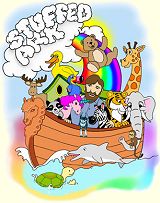|
The muskox is an arctic mammal of the Bovidae
family, noted for its thick coat and for the strong odor emitted by males,
from which its name derives. During the summer, muskoxen live in wet
areas, such as river valleys, moving to higher elevations in the winter to
avoid deep snow. They graze on grasses, reeds, sedges, and other ground
plants, digging through snow in the winter to reach their food.
Muskoxen are native to the Arctic areas of Canada,
Greenland, and Alaska. The Alaska population was wiped out in the late
nineteenth or early twentieth century, but muskoxen have since been
reintroduced to Alaska. The United States Fish & Wildlife introduced muskox
onto the Nunivak Island in 1935 as a means for sustenance living. The
species has also been reintroduced from Banks Island to northern Europe,
including Sweden, Estonia, the Dovre region of Norway, and Russia and from
Ellesmere island to Eastern Canada, in the province of Quebec. Muskoxen were
close to extinction at one point, but have recovered after being protected
from hunting. The world population is estimated at between 80,000 and
125,000, with an estimated 68,788 living on Banks Island.
The last known muskox from outside North America,
that lived on the Taymyr Peninsula of Siberia, died out about 2,000 years
ago.
Wikipedia, The Free
Encyclopedia |

